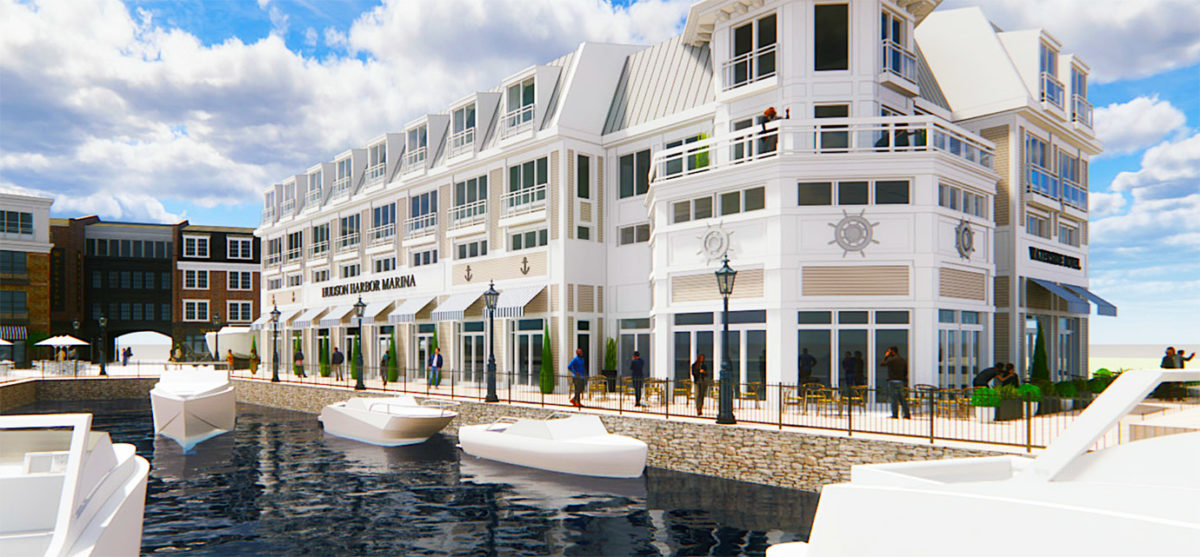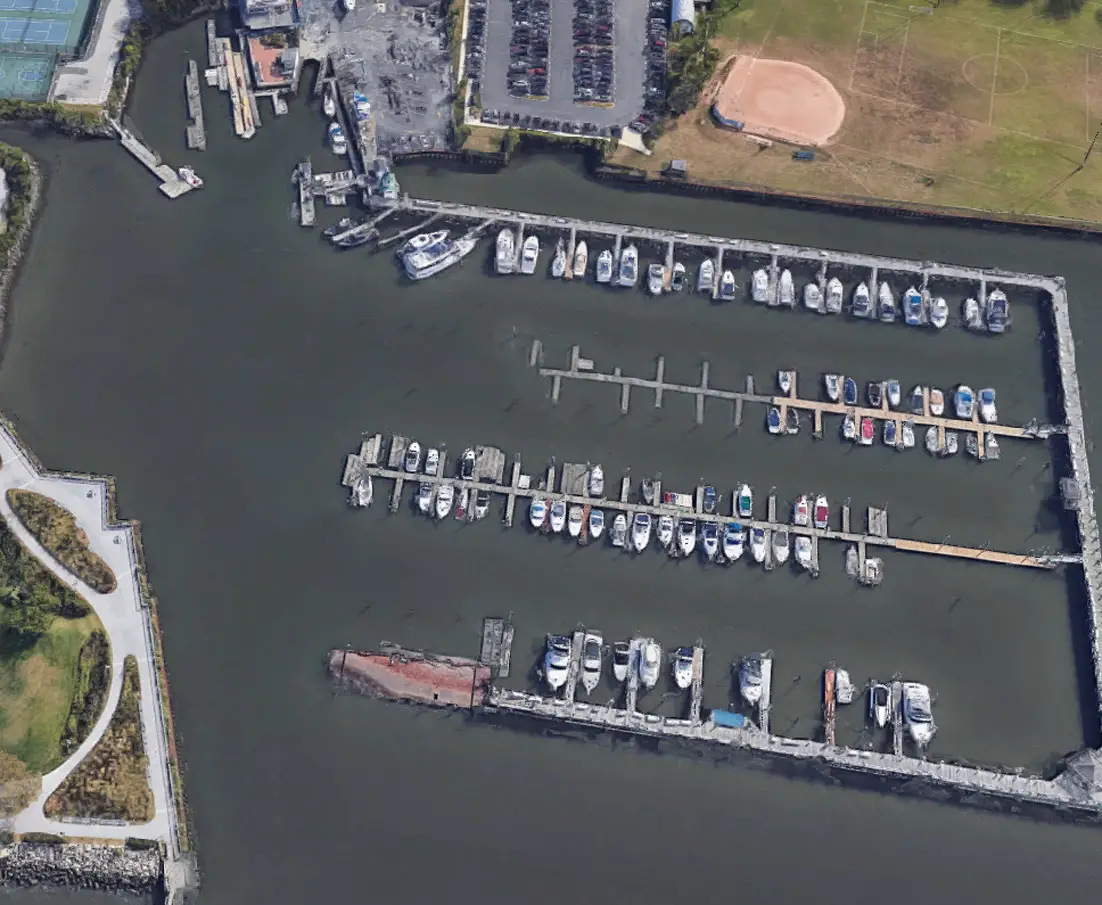‘Boatel’ plan for Tarrytown waterfront sets sail
A new plan is being floated to build a “Wharf Boatel” and improve the marina in Tarrytown that”™s home to the Tarrytown Boat & Yacht Club and the Barley on the Hudson restaurant. The proposal comes from Tarrytown Marina LLC.
The entity Tarrytown Marina LLC, an affiliate of Greenwich-based real estate and development firm National Resources LLC, bought the marina from the Tarrytown Boat & Yacht Club in February of 2020. According to a document on file with the Westchester County Clerk”™s Office, the consideration was $2.15 million. The boat club and the village of Tarrytown have a lease arrangement and Tarrytown Marina became a subtenant of the boat club.

A site plan application from Tarrytown Marina LLC that was submitted to the Tarrytown Planning Board is expected to be taken up by the board in the next month or two along with a rezoning petition that had been submitted to the village Board of Trustees and referred to the planning board for its recommendation.
National Resources has been developing Hudson Harbor, a project approved for 238 condominiums and townhouses along a stretch of Tarrytown”™s Hudson River waterfront just north of the Mario M. Cuomo Bridge. The marina is just south of the residential buildings in the Hudson Harbor project. A sign at the marina”™s entrance carries both the names and logos of the Tarrytown Boat & Yacht Club and The Marina at Hudson Harbor.
In 2019, the YZK Development Group had presented a concept to the village that would have involved four parcels on the west side of the train tracks fronting on the Hudson, one owned by the village of Tarrytown, another parcel housing the Tarrytown Boat & Yacht Club, an adjacent commuter parking lot used by about 170 cars that also is owned by the village and the boat club”™s marina.
The YZK plan called for a 168-room hotel and a separate building with 52 residential units. It also proposed constructing pods with hotel rooms that were on the water among the boats.
Attorney Brad Schwartz of the White Plains-based law firm Zarin & Steinmetz had told a work session of the Tarrytown Board of Trustees when the new concept was revealed, “We believe this concept addresses the feedback that we received from the board on prior iterations and there are four key elements …First, there would be no residential use. Second, no village land would be used. Third, the proposed height would comply with the current waterfront district zoning. Fourth is that the proposal would facilitate access to the riverwalk.”
Riverwalk is a public park that National Resources helped develop and is a segment of what ultimately is planned to be a 51-mile park along the Hudson.

Lauren Calabria of National Resources explained, “A boatel is a hotel where guests and visitors will come by car and bus or even the nearby Tarrytown train station but they will primarily be coming through by boat. These boatels really do become waterfront attractions that help to promote tourism and to serve and benefit surrounding communities … specifically restaurants, shops and local businesses.”
Calabria said that the plan would allow the continued operation of the Tarrytown Boat & Yacht Club well into the future.
According to the rezoning petition, Tarrytown Marina LLC would have to perform all obligations of the Tarrytown Boat & Yacht Club under the village lease, ensure that the marina is supported economically and the marina would be “vastly improved through significant dredging and other long-awaited repairs.”
The four-story boatel would have 103 rooms. There would be a 2,000-square-foot waterfront restaurant with outdoor dining along with a 1,407-square-foot store selling supplies used by boaters, including items such as snacks, sunglasses and sunscreen. A two-level garage would have 112 spaces with 20 set aside for valet parking. There would be 1,314 square feet set aside for use by the boat club as its meeting and club room.
According to the rezoning petition, the club has reserved the right to continue using up to 30 boat slips in the marina for existing members. The remainder of the 150 slips would be available for use by new members, visitors to the boatel and restaurant and members of the public. The petition states that it is anticipated the boatel would use up to 30 slips and the restaurant up to 12 slips primarily on weekends.
“In developing the Wharf Boatel concept, the newest iteration, we spent considerable time with our architects reviewing the historic character, architectural vernacular and the charm of the village of Tarrytown and we wanted to develop something that was complementary to the village and also attractive from both the water and street sides,” Calabria said. “We also took into consideration other waterfront towns such as Newport (Rhode Island).” She pointed out that the height of the boatel would conform with the 45-foot maximum allowed under waterfront zoning.
The rezoning petition that was submitted asks that village zoning be amended to permit a hotel as a principal use on properties in the Waterfront Zoning District. The petition states that such an amendment would also provide that any such hotel must be operated in conjunction with an adjoining marina and that restaurants and other customary accessory uses such as marine support services and retail would have to be permitted.
Lynne Ward, executive vice president of National Resources, emphasized that the concept calls for a boutique marina with limited boat servicing facilities.
“The intention is to keep it as the operating Tarrytown Boat Club, the 100-year-old club,” Ward said. “The whole openness of the design with a cut-through and a walkway is to bring the public to the water and to the restaurant.”
Ward said that occupancy of the boatel by people arriving by boat would be seasonal and heavier on weekends during the boating season with weekday room occupancy estimated to be around 50%.
“We”™ve been very concerned about the loss of marina facilities on the Hudson River … and this is kind of a unique opportunity to put this back into operation,” Ward said. “It”™s been very neglected since Hurricane Sandy but so have many other marinas. So, there is a bigger cause here. One can see that this is a wasted asset, actually.”
